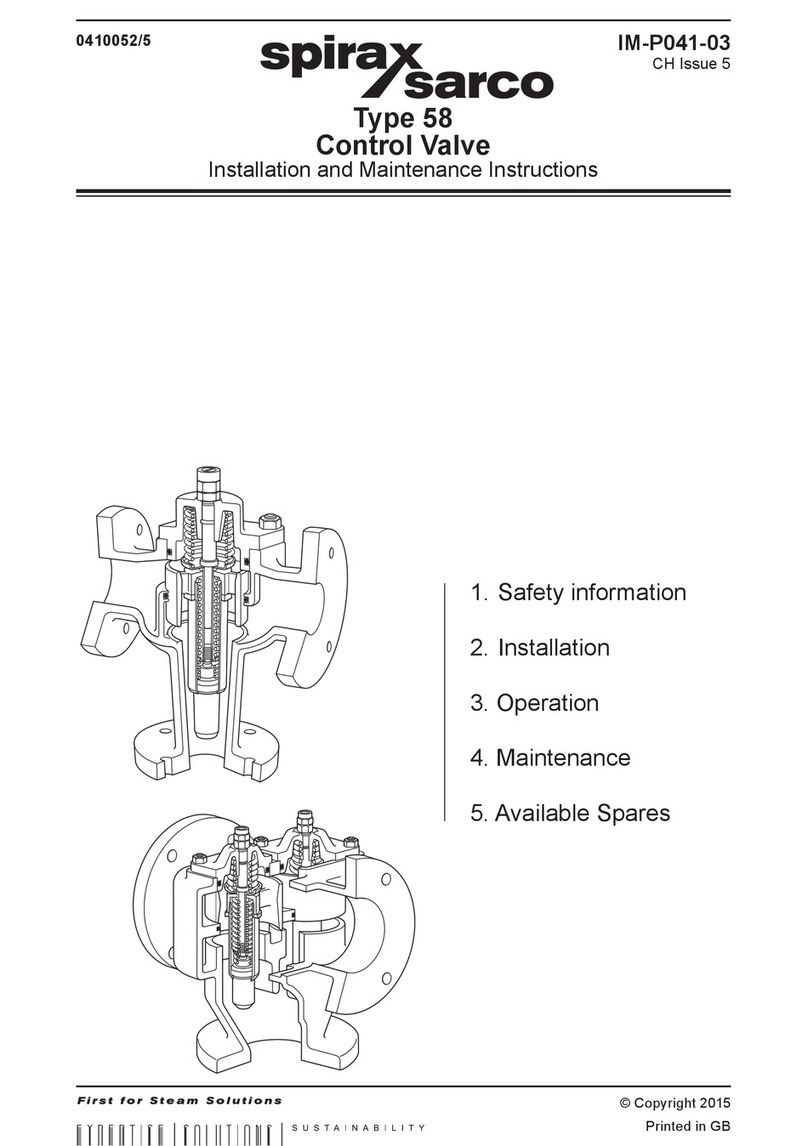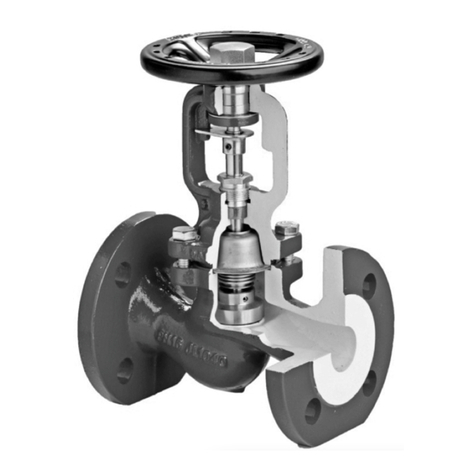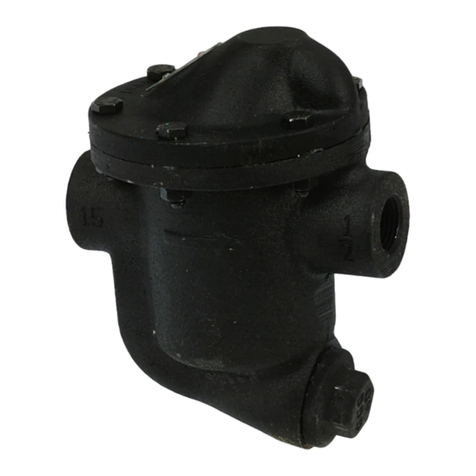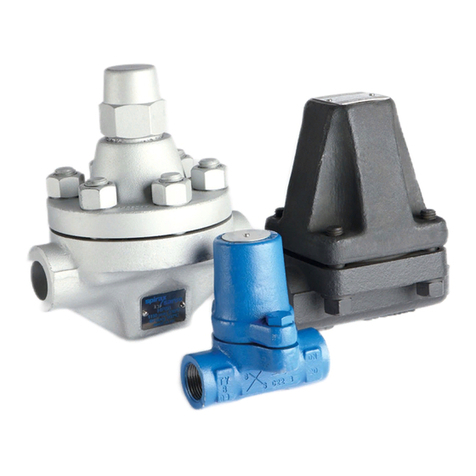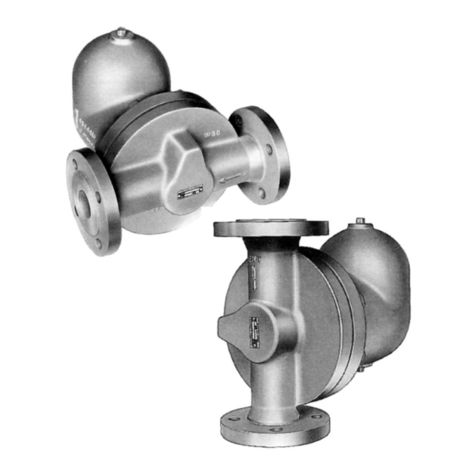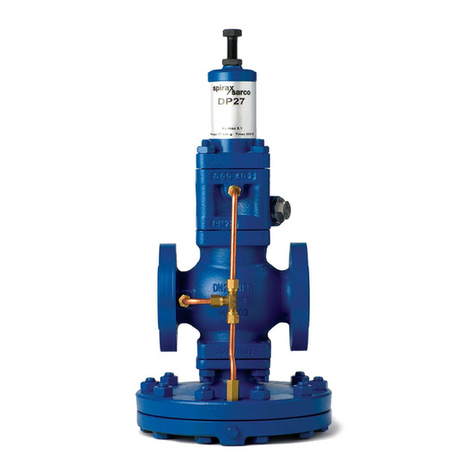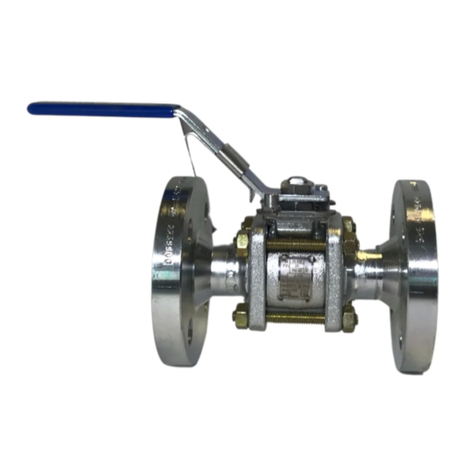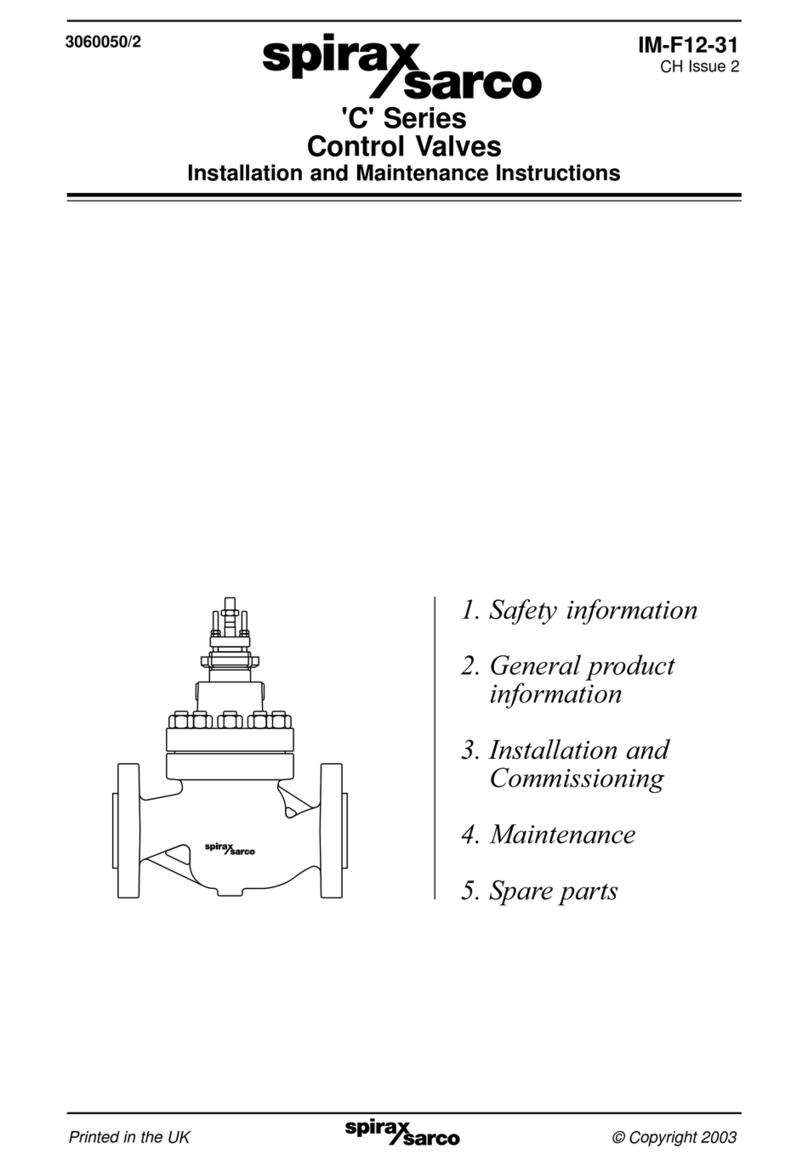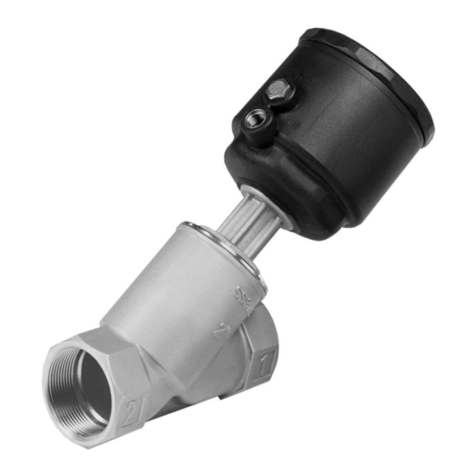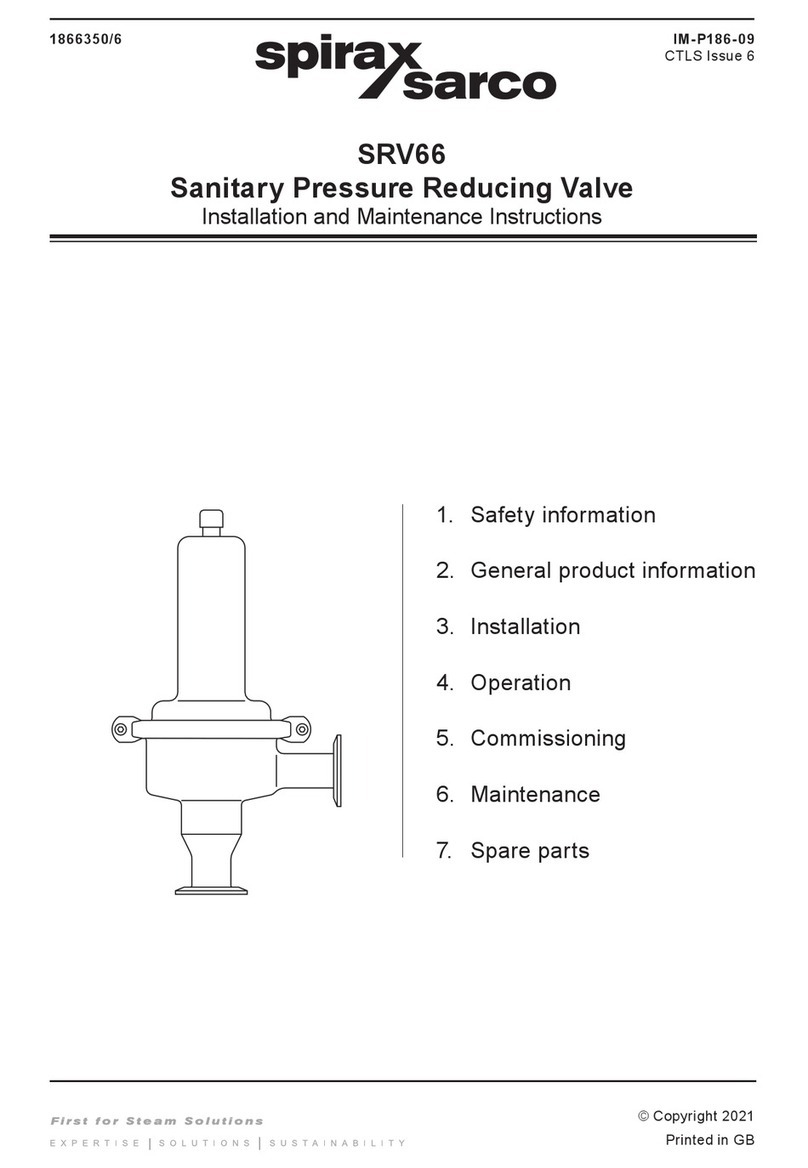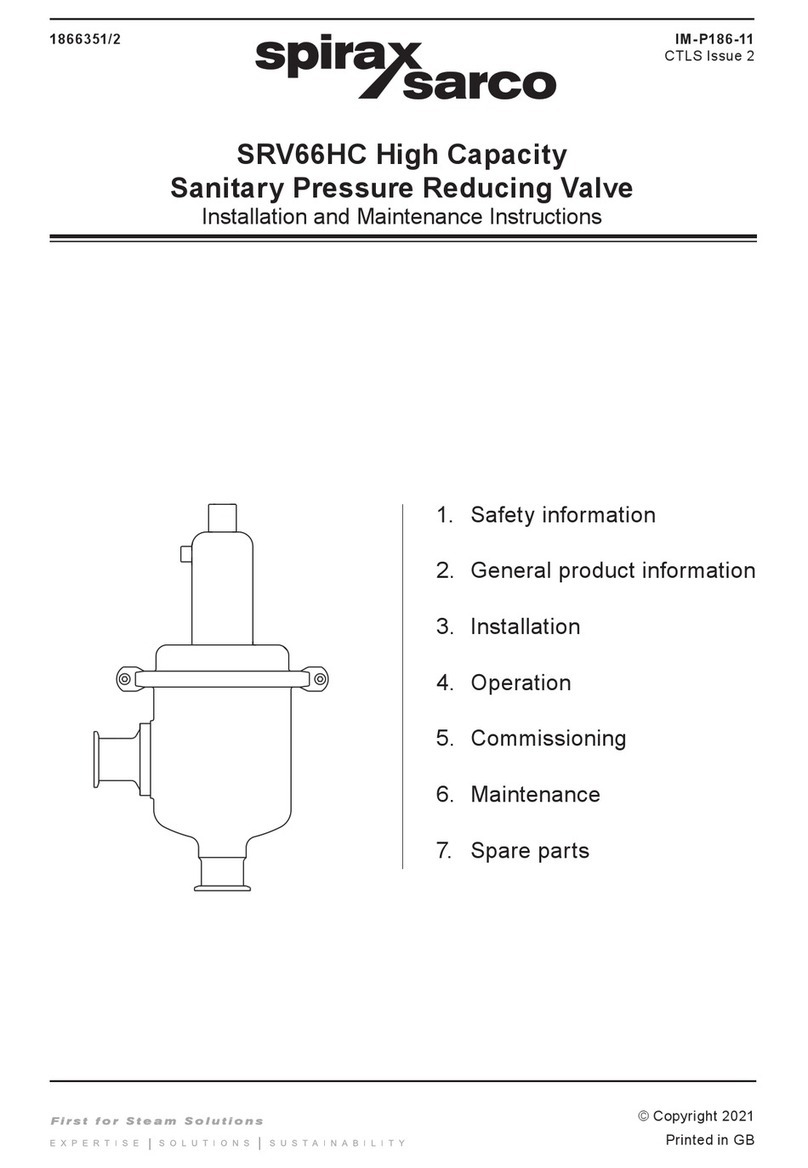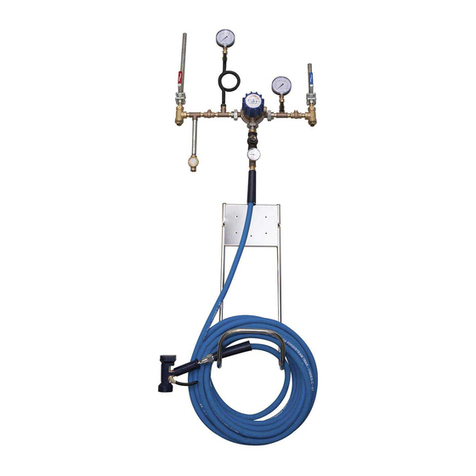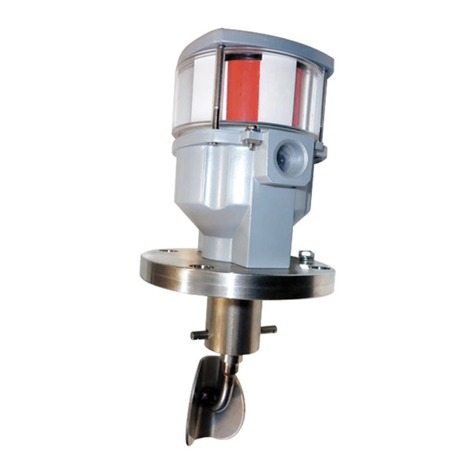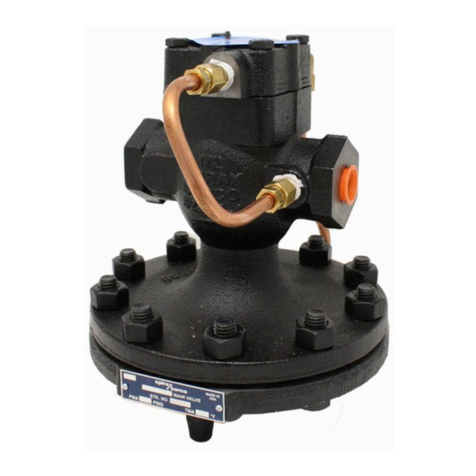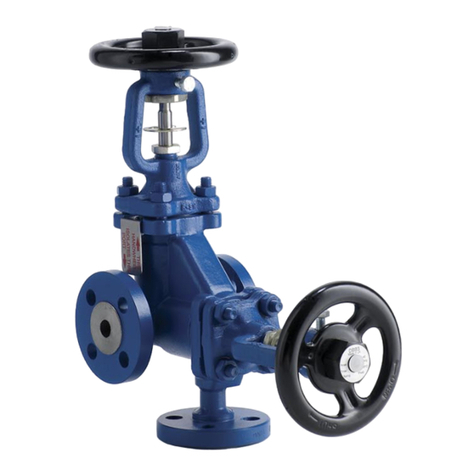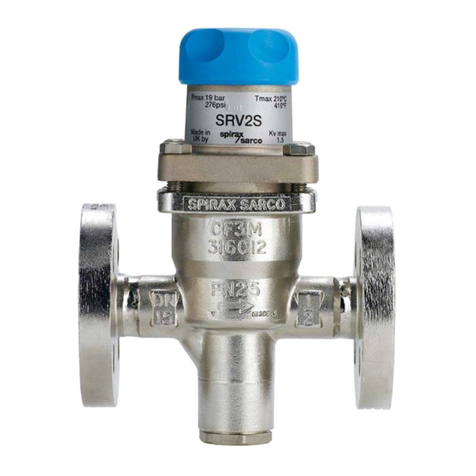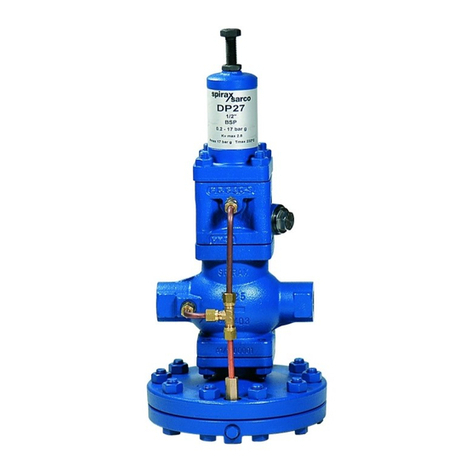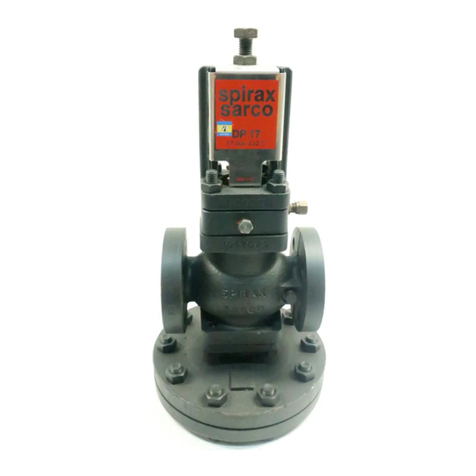
IM-P184-19 CTLS Issue 4
4
BSA3-BD and BSA6-BD Bellows Sealed Stop Valves
i) The product has been specifically designed for use on steam, compressed air, water/condensate
which are in Group 2 of the above mentioned Pressure Equipment Directive.
ii) A number of products are supplied for the intention of the end user (or agent thereof) modifying
the flange configuration from that supplied. It is the responsibility of the organisation carrying
out the modification to do so in accordance with the internationally recognised flange standards
and to ensure that the design rating and operation of the product are not compromised. Spirax Sarco
will not be held responsible for any unapproved modification or consequential liability resulting
in failure to observe these requirements.
iii) Determine the correct installation situation and direction of fluid flow.
iv) Spirax Sarco products are not intended to withstand external stresses that may be induced by
any system to which they are fitted. It is the responsibility of the installer to consider these
stresses and take adequate precautions to minimise them.
v) Remove protection covers from all connections and protective film from all name-plates, where
appropriate, before installation on steam or other high temperature applications.
1.2 Access
Ensure safe access and if necessary a safe working platform (suitably guarded) before attempting
to work on the product. Arrange suitable lifting gear if required.
1.3 Lighting
Ensure adequate lighting, particularly where detailed or intricate work is required.
1.4 Hazardous liquids or gases in the pipeline
Consider what is in the pipeline or what may have been in the pipeline at some previous time.
Consider: flammable materials, substances hazardous to health, extremes of temperature.
1.5 Hazardous environment around the product
Consider: explosion risk areas, lack of oxygen (e.g. tanks, pits), dangerous gases, extremes of
temperature, hot surfaces, fire hazard (e.g. during welding), excessive noise, moving machinery.
1.6 The system
Consider the effect on the complete system of the work proposed. Will any proposed action (e.g. closing
isolation valves, electrical isolation) put any other part of the system or any personnel at risk?
Dangers might include isolation of vents or protective devices or the rendering ineffective of
controls or alarms. Ensure isolation valves are turned on and off in a gradual way to avoid system
shocks.
1.7 Pressure systems
Ensure that any pressure is isolated and safely vented to atmospheric pressure. Consider double
isolation (double block and bleed) and the locking or labelling of closed valves. Do not assume
that the system has depressurised even when the pressure gauge indicates zero.
1.8 Temperature
Allow time for temperature to normalise after isolation to avoid the danger of burns.
